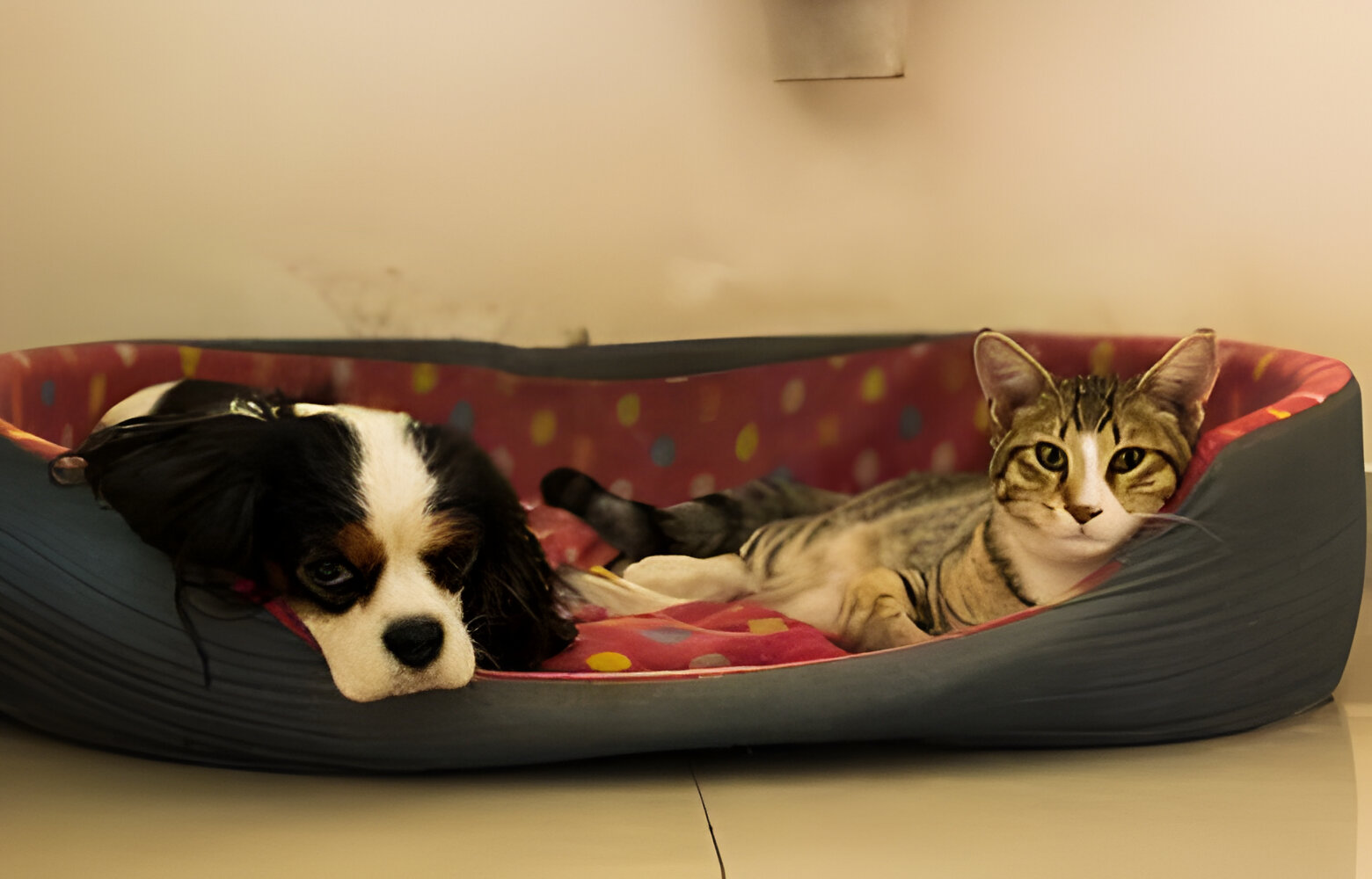Choosing the right bed for your pet is more than just a simple purchase; it’s about ensuring your furry friend has a comfortable, supportive, and safe place to rest and sleep. Just like humans, pets need a designated area to relax and recharge. The perfect pet bed can improve their overall health, happiness, and well-being. In this comprehensive guide, Pet Barn will delve into various factors to consider when selecting the perfect bed for your pet, from size and material to special needs and preferences.
Understanding Your Pet’s Sleeping Habits
1. Observe Their Sleep Positions
Pets, like humans, have preferred sleeping positions that can influence the type of bed that will be most comfortable for them. Here are some common sleeping positions and the best bed types for each:
2. Monitor Their Activity Levels
Active pets may require beds with more robust support to accommodate their energy levels and protect their joints. On the other hand, less active pets or senior animals might need softer, more cushioned beds to relieve pressure points and provide additional warmth.
Size Matters: Choosing the Right Bed Size
1. Measure Your Pet
Accurately measuring your pet is crucial for selecting a bed that fits them comfortably. Measure from the tip of their nose to the base of their tail to get their length, and from the top of their head to the ground for their height. Ensure you add a few extra inches to these measurements for added comfort.
2. Consider Growth for Puppies and Kittens
If you’re selecting a bed for a growing puppy or kitten, consider their adult size. Opting for a bed that accommodates their future growth can save you from purchasing multiple beds as they mature.
Material Matters: Choosing the Right Fabric and Filling
1. Durability and Maintenance
- Washability: Choose a bed with a removable, machine-washable cover for easy cleaning. Pets can bring in dirt, dander, and even parasites, so being able to regularly wash the bed is essential for hygiene.
- Durability: Consider materials that can withstand scratching and chewing, especially for pets that exhibit such behaviors.
2. Comfort and Support
- Memory Foam: Ideal for older pets or those with joint issues, memory foam beds provide excellent support and conform to the pet’s body shape, offering maximum comfort.
- Orthopedic Foam: Another excellent choice for pets with arthritis or mobility issues, orthopedic foam beds provide firm support that can help alleviate pain and discomfort.
3. Temperature Regulation
- Cooling Beds: For pets in warmer climates or those with thicker coats, cooling beds made with breathable fabrics or gel inserts can help regulate body temperature.
- Heated Beds: Conversely, pets that are often cold, such as short-haired breeds or senior animals, might benefit from heated beds that provide extra warmth and comfort.
Special Considerations for Different Types of Pets
1. Dogs
- Breeds and Sizes: Large breeds may require extra-large beds with additional padding to support their weight, while small breeds might prefer cozier, more enclosed spaces.
- Activity Level: Active dogs might enjoy beds that offer more space to sprawl out, while less active dogs could benefit from beds that provide more support and warmth.
2. Cats
- Privacy Needs: Many cats appreciate beds that offer a sense of security, such as cave-style beds or those with high sides.
- Flexibility: Cats often change their preferred sleeping spots, so having a versatile bed that can be moved easily might be beneficial.
Health Considerations
1. Allergies
If your pet has allergies, choose hypoallergenic materials for their bed. Avoid beds filled with down or feathers and opt for synthetic fillings that can reduce the risk of allergic reactions.
2. Joint and Mobility Issues
For pets with arthritis or other joint problems, orthopedic or memory foam beds can provide the necessary support to alleviate discomfort and improve sleep quality.
3. Incontinence
For pets with incontinence issues, waterproof beds or those with moisture-resistant covers can protect the filling from damage and make cleaning easier.
Style and Aesthetics
While the primary focus should be on your pet’s comfort, you might also want the bed to complement your home decor. Pet beds come in various styles, colors, and designs, so you can find one that fits your aesthetic preferences without compromising on functionality.
Budget Considerations
Quality vs. Cost
Investing in a high-quality bed might be more expensive upfront, but it can save you money in the long run by lasting longer and providing better support and comfort for your pet.
Selecting the perfect bed for your pet involves considering their size, sleeping habits, health needs, and personal preferences. By taking the time to understand what will make your pet most comfortable, you can ensure they have a cozy, supportive, and safe place to rest. A well-chosen bed can significantly contribute to your pet’s overall well-being, providing them with the comfort they need for a happy, healthy life. Whether you have a playful puppy, a serene senior dog, a curious kitten, or any other beloved pet, there is a perfect bed out there waiting to offer them the rest they deserve.
Final Thoughts and Recommendations
Remember, the perfect bed meets both your pet’s needs and fits well within your home environment. It’s an investment in your pet’s health and happiness, so take the time to choose wisely. And don’t forget to monitor how your pet responds to their new bed—sometimes a bit of trial and error is necessary to find the ideal fit. With the right bed, your pet will enjoy countless hours of restful sleep and relaxation, contributing to their overall well-being and enhancing the bond you share. Happy bed hunting! Visit the pet barn website to discover a wide range of high-quality beds for your cat or dog.

